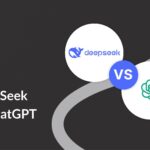
What Happens to Your Brain When You Use ChatGPT? Scientists Took a Look
# The Impact of Generative AI on Memory and Learning: Unveiling the Findings from the MIT Study
In an age where generative AI tools like OpenAI’s ChatGPT are rapidly reshaping the landscape of work, education, and daily tasks, a pivotal question surfaces: How do these technologies influence the way we think and learn? A groundbreaking yet preliminary study by researchers at the Massachusetts Institute of Technology (MIT) offers some initial answers, positing a more profound reevaluation of their integration, especially in educational settings.
## The Cognitive Distinction: AI vs. Human-Only Task Completion
“Our brains work differently when we’re using generative AI tools as opposed to relying solely on our cognitive capabilities,” noted Nataliya Kosmyna, the lead author of the study. Although this assertion might seem self-evident, the implications are far-reaching, especially when it concerns education and personal development. The study’s critical finding is that engagement with tools like ChatGPT leads to decreased memory retention and neural connectivity compared to completing tasks without these aids.
The MIT study, small in scale with just 54 participants, divided subjects into three distinct groups. These groups were tasked with writing essays: one had access to ChatGPT, another used a standard search engine, and the third relied only on their cognitive prowess. The researchers deployed electroencephalography (EEG) to record brain activity and conducted interviews to assess memory recall immediately post-task.
### Key Findings and Observations
– **Linguistic Diversity and Engagement**: Essays from the “brain-only” group showed distinct linguistic styles, suggesting higher levels of engagement and originality. In contrast, those using ChatGPT produced essays that were notably similar, reflecting a form of homogenization inherent to AI-assisted writing.
– **Memory Recall and Ownership**: Participants who relied on their mental faculties exhibited superior recall and could quote their work more accurately. As Kosmyna pointed out, “You wrote it, didn’t you? Aren’t you supposed to know what it was?” This starkly contrasts with the AI-assisted group, highlighting potential concerns around intellectual ownership and memory fragmentation.
– **Neural Activity**: EEG results indicated heightened neural connectivity among those writing without aids, affirming that manual cognitive effort fosters more substantial neural interactions. The AI group had the least activity, underscoring the notion that reliance on external tools diminishes internal cognitive engagement.
## Learning from the Data: Implications for Education and Beyond
The findings from this study suggest caution in prematurely integrating AI tools into educational paradigms. While generative AI can enhance capabilities, relying on them too early might compromise essential cognitive development and autonomy.
### Embracing a Balanced Educational Approach
1. **Delayed Integration**: The study advocates for a measured approach where AI integration in educational frameworks is delayed until students have cultivated a robust foundation of self-driven cognitive skills. This ensures that when tools are introduced, they augment rather than replace critical thinking processes.
2. **Fostering Cognitive Autonomy**: Encouraging students to complete tasks manually before leveraging AI tools could promote deeper understanding and intrinsic motivation, ultimately leading to a sense of genuine ownership over their learning journey.
3. **Engagement Over Efficiency**: Prioritizing cognitive engagement — characterized by active problem-solving and original thought — over mere efficiency can lead to more profound educational outcomes. As Robert Cummings, a professor of writing and rhetoric, emphasized, “Writing an essay is about developing your thinking, about understanding the world around you.”
## Navigating the Future: A Call for Continued Exploration
The MIT study opens the door to numerous questions and opportunities for further research. How might prolonged use of generative AI impact cognitive functions over more extended periods? Could integrating AI tools in more innovative ways mitigate the potential drawbacks highlighted by this study? As Genevieve Stein-O’Brien from Johns Hopkins University pointed out, the structural development of our brain predominates early in life, long before AI interaction. Yet, the implications for youth in education remain a pivotal concern.
### Questions to Consider
– **When Will AI Integration Be Most Beneficial in Education?** Is there a developmental stage or educational level where the introduction of AI can yield optimal results without compromising the foundational cognitive processes?
– **How Might We Strategically Leverage AI Tools in Education Without Diminishing Engagement?** Can the integration of AI tools be designed to complement rather than substitute critical thinking?
In conclusion, as we navigate this technologically driven era, it becomes imperative to strike a balance between embracing new tools and preserving the cognitive processes that define our humanity. The excitement of AI’s potential should be tempered with thoughtful consideration of its impact on learning and brain function. The road ahead calls for continued research, adaptation, and dialogue on the most beneficial use of AI in our learning environments and beyond. What steps will educators and technologists take to harness the true potential of AI without losing sight of the cognitive growth that unassisted tasks can provide?

